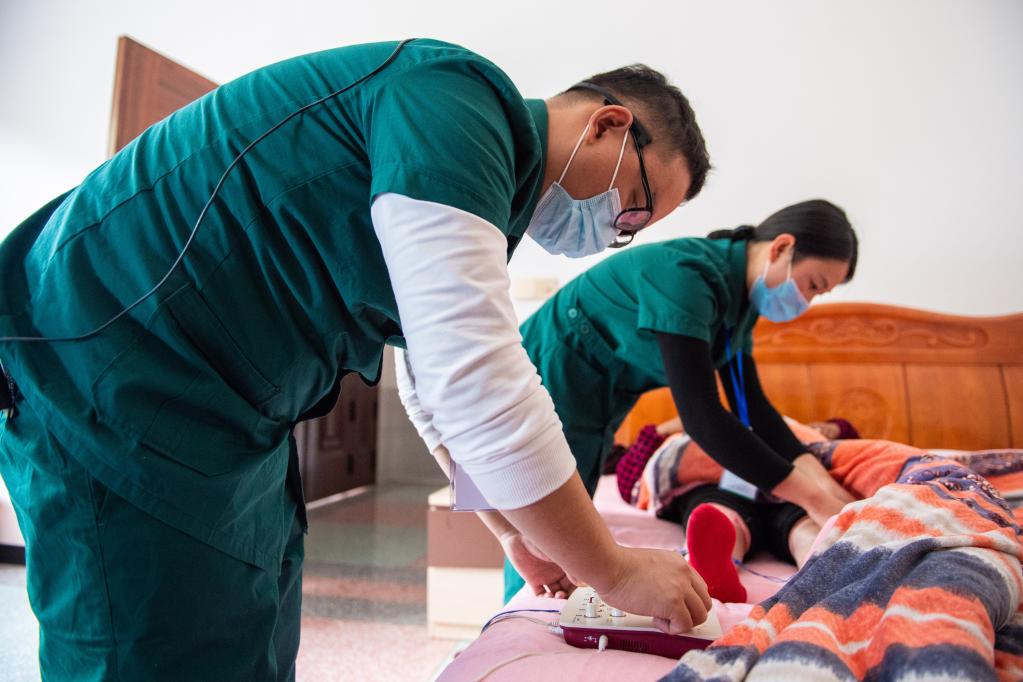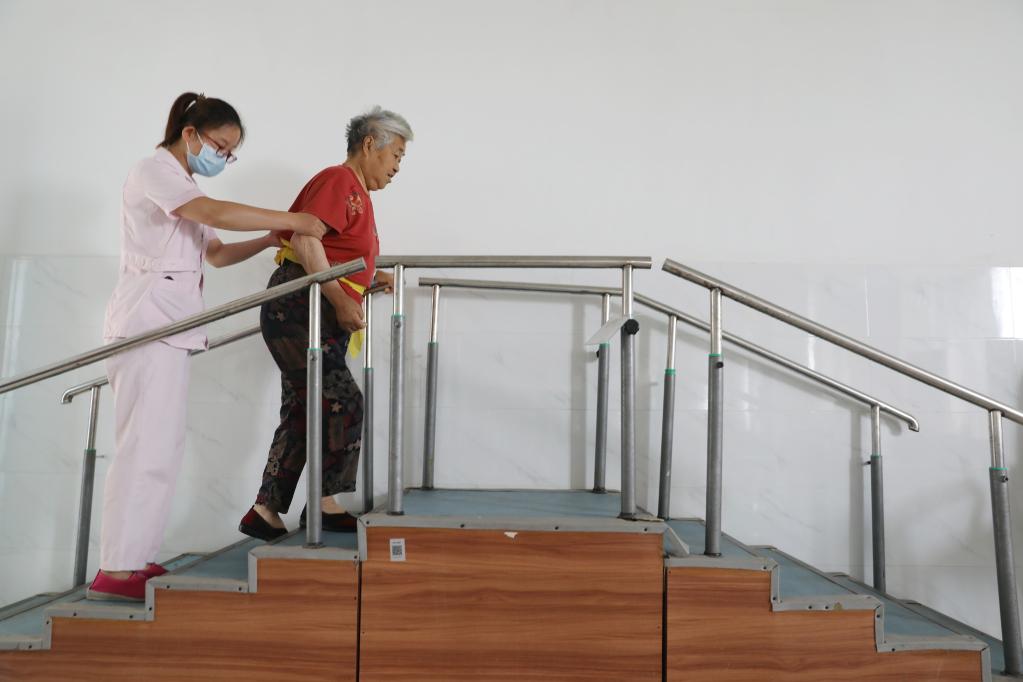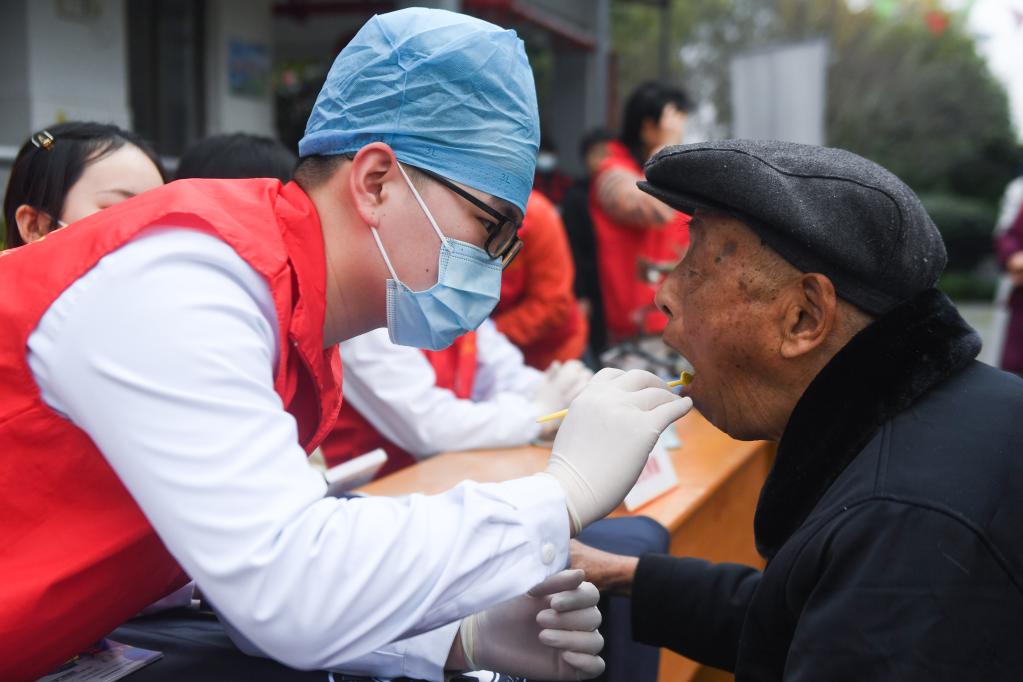Xinhua News Agency, Beijing, July 21st.Question: Four Points of View in Guiding Opinions in the Field of Combination of Medical Care and Nursing
Xinhua News Agency reporters Dong Ruifeng and Li Heng
In the face of 267 million elderly people, how to protect the most beautiful “sunset red”? Promoting the combination of medical care and elderly care is an important measure to optimize the supply of elderly health and elderly care services, but it also faces difficulties such as few clinical seats, high costs, and shortage of nursing staff.
The “Guiding Opinions on Further Promoting the Development of the Combination of Medical Care and Nursing” was released on July 21. On the basis of summarizing the experience of pilot projects in recent years, the system of policies, services, standards, talents, and information of the combination of medical care and nursing in my country has been further improved, which will help local governments A “road map” is drawn for large service supply and opening up blocking points.
Aspect 1: Speeding up infrastructure to “make up for shortcomings”
By the end of 2021, there will be 1.75 million beds in 6,492 integrated medical and elderly care institutions nationwide, and the proportion of elderly care institutions providing medical services in different forms exceeds 90%. However, compared with the growing elderly population and service demand, some basic service facilities still have gaps.
According to the guidance, in addition to actively providing home medical services, in communities and towns, qualified health centers, nursing homes, etc., should use existing resources to renovate and expand a number of integrated medical and nursing service facilities.
On March 4, 2022, in the nursing home of Linshan Town, Yuyao City, Zhejiang Province, volunteers check the oral cavity of the elderly.Photo by Xinhua News Agency reporter Xu Yu
For public medical and health institutions, it is encouraged to provide home medical services and contractual services combining medical care and elderly care, especially public medical and health institutions with abundant medical resources at level 2 and below, using existing beds to provide elderly care services.
For nursing homes, it is necessary to renovate and increase nursing beds and facilities. At the same time, support social forces to build professional, large-scale and outstanding elderly care institutions with outstanding ability to combine medical care and elderly care.
“The vast demand for the combination of medical care and elderly care is at the grassroots level, and we must strengthen the work of ‘making up the shortcomings’ of the combination of medical care and elderly care at the grass-roots level.” Liang Wannian, dean of the Institute of Health China, Tsinghua University, said that the guidance has specifically strengthened the construction of community infrastructure service facilities for the combination of medical care and elderly care. .
Aspect 2: Service content highlights “continuity”
Provide “health care” for 60-year-olds, “silver bell care” for 80-year-olds, and “sunning care” for 100-year-olds… Community Health Service Center of Kangjian Street, Xuhui District, Shanghai provides “medical care” for the elderly Jusong” whole-process health management service, so that they will be warm in their hearts.
Highlighting comprehensive and continuous services is an important direction for the development of the combination of medical care and elderly care. The guiding opinions propose that all localities should promote the overall layout and resource sharing of public service facilities such as community medical and health care, elderly care services, and disability assistance, and encourage grass-roots units to actively explore the on-demand standardized conversion mechanism for elderly care beds and medical beds in relevant institutions.

On November 12, 2021, in Yangsimiao Community, Guoyuan Town, Changsha County, Changsha, Hunan Province, medical staff Peng Yong (left) and Liu Min gave physiotherapy to the elderly at home.Photo by Xinhua News Agency reporter Chen Sihan
“The promotion of the combination of medical care and elderly care involves various aspects such as medical care, elderly care, community, and industry. It is very important to do a good job in the connection of services between different systems.” Feng Wenmeng, a researcher at the Institute of Public Administration and Human Resources of the Development Research Center of the State Council, said.
The guiding opinions also emphasize the active role of informatization. “Smart informatization is an important scientific and technological support method to improve the efficiency and level of medical and elderly care services.” said Chen Gong, director of the Population Research Institute of Peking University. The development of the elderly care industry and other methods will further optimize the integration of medical care and elderly care services.
Aspect 3: Supporting policies to get through the “last meter”
The Yanda Nursing Center located in Yanjiao, Hebei Province, is home to 97% of the elderly from Beijing. The adjacent Yanda Hospital took the lead in realizing the interconnection with Beijing Medical Insurance, and through cooperation with Beijing’s high-quality medical resources, it has greatly improved the medical and nursing capabilities of the elderly.
However, there are still “big problems” in some places. For example, some medical institutions “have contracts but no incentives”, and have insufficient motivation to provide combined medical and elderly care services.
Improve price policies, increase insurance support, revitalize land resources, implement fiscal and tax incentives… The guidance issued this time clearly proposes support policies in multiple dimensions.
According to the guiding opinions, public medical and health institutions provide door-to-door medical services for the elderly, and adopt the method of “medical service price + door-to-door service fee”. Sure.

On July 3, 2021, a medical staff helps an elderly person with rehabilitation training at the medical center of Wenxian Nursing and Nursing Home in Jiaozuo City, Henan Province. Xinhua News Agency (Photo by Xu Hongxing)
In addition, according to the characteristics of the combination of medical care and elderly care, reasonably determine the control index of the total amount of medical insurance for the medical and health institutions in the old-age care institutions, and encourage commercial insurance to include the prevention and health care, health management, rehabilitation, and nursing of the elderly into the coverage; medical and health land and social welfare land are available. For the construction of medical and elderly care projects, allow and encourage rural collective construction land to be used for the construction of medical and elderly care projects; through tax incentives, support social forces to provide medical and elderly services…
“It will not only expand the supply of incremental resources, but also revitalize the existing resources.” Huang Shisong, a professor at the Institute of Gerontology of Renmin University of China, said that when implementing national policies, all regions and departments should take measures to local conditions and transform existing local resource conditions into favorable conditions for development. conditions, can activate the initial kinetic energy, and better achieve “up and down linkage”.
Aspect 4: Multi-channel expansion of professional “supply”
Data shows that there are about 40 million disabled and partially disabled elderly people in my country, and the demand for nursing staff exceeds 13 million, but currently there are only more than 500,000 related personnel.
The guiding opinions specifically propose to speed up the training of talents in short supply in medical and health care and elderly care services, and propose to improve the nursing ability and level of family caregivers of disabled elderly by carrying out emergency rescue and nursing skills training.
In addition, the guidelines also require public medical and health institutions to give appropriate preference to medical personnel who have completed home medical services, combined medical and nursing services, and other services when performing internal performance distribution. At the same time, support medical staff, especially retired nurses with rich clinical experience, to practice in medical and health institutions that provide integrated medical and elderly care services, and to provide services in elderly care institutions that provide integrated medical and elderly care services.
“The guidance proposes three key tasks: strengthening talent training, guiding medical staff to engage in combined medical and nursing services, and expanding the disabled care service team.” Hao Xiaoning, a researcher at the Health Development Research Center of the National Health Commission, said that this is to promote the increase in the number of talents. A package of qualitative measures is expected to attract more talents to participate in the integrated medical and elderly care services.
